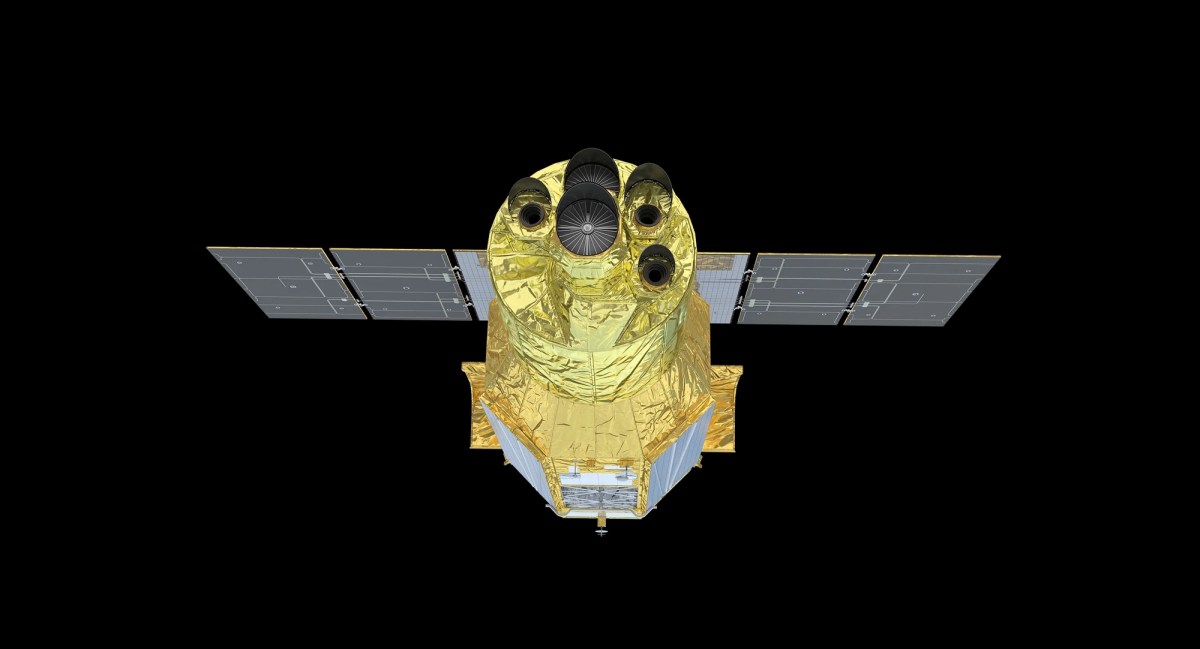WASHINGTON — NASA and the Japanese space agency JAXA plan to operate an instrument on an X-ray astronomy satellite as-is for at least the next year and a half despite an issue affecting one of its instruments.
JAXA launched the X-ray Imaging and Spectroscopy Mission (XRISM) in September 2023 and the spacecraft, whose instruments were developed in collaboration with NASA, has started its prime science mission. XRISM carries two instruments to conduct X-ray astronomy.
In January, project scientists said that XRISM was working well except for an aperture door, also called a gate valve, for the Dewar on its imaging instrument, Resolve, which failed to open. The instrument can still operate with the door closed, although the door, made of beryllium, does attenuate some X-rays at lower energies.
At the time, efforts were underway to try and open the gate valve. However, speaking at a May 7 meeting of the National Academies’ Board on Physics and Astronomy, Mark Clampin, director of NASA’s astrophysics division, said those efforts were on hold for the next year and a half.
“We decided that the best course of action right now is to move forward with the science program for the next 18 months,” he said, saying that the instrument is still doing “really great science” despite the valve being stuck in place. “We believe that the best approach is to spend the next 18 months collecting science data with this mission before another attempt is made to try to dislodge the gate valve.”
The valve was supposed to be moved out of the way through two non-explosive actuators. “We believe, based on the information that we have been given by the Japanese, that there is probably a snag on a harness attached to one of the non-explosive actuators, which is preventing the valve from moving out of the way.”
One reason for the delay, he said, is the difficulty dealing with harness at cryogenic temperatures. The proposed fixes for the harness, he said, involve managing temperatures of part of the instrument as well as putting “some kind of perturbation” into it to shake the harness loose. “We believe right now the lowest-risk approach is to continue getting science, and we’ll come back to the gate valve in 18 months.”
NSF astronomy budget challenges
In his presentation, Clampin briefly touched on budget issues facing his decision, including proposals to review changes to operations of the Chandra X-Ray Observatory and Hubble Space Telescope to reduce their costs. Those efforts are ongoing, he said, with no major updates on their progress.
NASA is not the only agency facing difficulty funding major astronomy programs. Later in the board meeting, R. Chris Smith, interim director of the astronomical sciences division at the National Science Foundation, said his agency had recently decided to halt work on a major ground-based astrophysical project.
That project, called CMB-S4, had planned to establish an observatory at the South Pole to study the cosmic microwave background, a signature of the Big Bang at microwave wavelengths, to better understand the early history of the universe as well as dark matter and dark energy. It was one of the top priorities for groundbased facilities in the Astro2020 decadal survey as well as a separate review of priorities in particle physics.
Smith announced at the board meeting that NSF had decided not to move CMB-S4 into its next phase of development, called Major Facility Design Stage, at the current time. He cited the needs for NSF to invest in overall infrastructure at the South Pole.
“The agency must prioritize the recapitalization of the critical infrastructure at the South Pole,” he said. That work, he said, would support a wide range of science done at the South Pole, not just astrophysics, stating later that CMB-S4 could move forward at some later, undefined date.
One factor in that decision is the agency’s budget. NSF requested $11.3 billion in fiscal year 2024 but received less than $9.1 billion. Smith said NSF is still working on an operating plan for 2024, with no details yet how it would affect work at its various divisions, including astronomical sciences.
That is also affecting how the NSF approaches the highest groundbased astronomy priority in Astro2020, support for the U.S. Extremely Large Telescope (US-ELT) program. That would provide funding for two large telescopes under development now, the Thirty Meter Telescope (TMT) and Giant Magellan Telescope (GMT). NSF would partially fund both telescopes and get a share of observing time it would make available to the broader astrophysics community.
The NSF announced in March that the National Science Board had recommended NSF proceed with support of just one of the two telescopes, with a cost cap of $1.6 billion. That came at the same time as the report accompanying the final fiscal year 2024 appropriations bill included language that “strongly encourages” the NSF to support both US-ELT telescopes.
Smith said at the board meeting that the NSF, at a May 2 meeting, formally kicked off the process to decide with of the two large telescope projects. The director of NSF, Sethuraman Panchanathan, formally directed the agency to begin an external review that will provide him with advice on whether to support either telescope.
That review will examine the progress GMT and TMT have made since their preliminary design reviews and how they are mitigating various risks. The review will also examine how going forward with either telescope would affect overall NSF resources.
Smith said that review is scheduled to be completed by September, but didn’t indicate when NSF would formally select one of the telescope projects for agency support.
